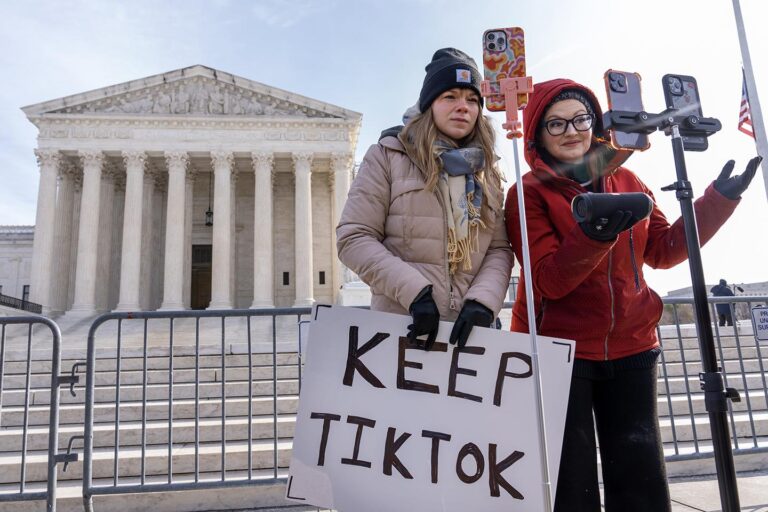Supreme Court Endorses Federal Ban on TikTok: A Turning Point in Digital Security and Social Media Oversight
Federal Government’s Authority Reinforced in TikTok Ban
The recent Supreme Court ruling firmly supports the federal government’s power to impose restrictions on TikTok, emphasizing national security risks linked to the app’s Chinese ownership. This verdict not only empowers the administration to enforce bans on foreign-owned digital platforms but also establishes a critical legal benchmark for future regulatory actions in the tech sector. Analysts predict this could pave the way for more rigorous interventions against other applications deemed security threats, highlighting the government’s growing influence in cybersecurity and data governance.
The decision reshapes the regulatory surroundings with several key outcomes:
- Clear Enforcement Mandate: Federal agencies now have unequivocal authority to implement restrictions swiftly, minimizing legal obstacles.
- Industry Adjustments: Social media companies with international affiliations may need to overhaul policies to reduce exposure to regulatory risks.
- User Impact: American consumers could experience service disruptions or be required to comply with data localization protocols.
| Focus Area | Description | Expected Timeline |
|---|---|---|
| Policy Enforcement | Immediate federal oversight and action | Within several weeks |
| Judicial Proceedings | Potential ongoing appeals from TikTok | Continuing |
| Market Dynamics | Shift towards U.S.-based social media platforms | Next 6 to 12 months |
Consequences for Users and Creators Amid TikTok’s Uncertain Future
With the Supreme Court’s endorsement of the TikTok ban, millions of users face immediate interruptions, sparking concerns about losing a vital source of social interaction and entertainment. For content creators who rely heavily on TikTok’s expansive reach, this ruling necessitates a swift pivot to alternative platforms such as Instagram Reels, YouTube Shorts, or Snapchat Spotlight to maintain audience engagement and revenue streams. The uncertainty surrounding TikTok’s availability compels both users and creators to adapt quickly to new content ecosystems and algorithmic environments.
Challenges and strategic considerations include:
- Revenue Interruptions: Influencers risk losing brand partnerships tied exclusively to TikTok’s audience.
- Community Dispersion: Established follower groups may fragment across multiple platforms, weakening social bonds.
- Content Strategy Shifts: Each platform’s unique format demands creative recalibration to optimize engagement.
| Group | Effect | Likely Response |
|---|---|---|
| Everyday Users | Loss of entertainment and social connection | Transition to Instagram or YouTube |
| Professional Creators | Decline in income and audience reach | Adopt multi-platform content strategies |
| Advertisers | Reduced advertising reach and effectiveness | Explore alternative marketing channels |
Broader Legal and Economic Ramifications for Tech Industry and Global Relations
The Supreme Court’s affirmation of the TikTok ban signals a transformative moment for technology companies operating amid tightening regulatory frameworks. This ruling clarifies the intersection of national security concerns with digital platform governance, compelling firms to prepare for intensified oversight, including stricter compliance mandates, data localization requirements, and demands for openness in algorithmic processes and content moderation. Non-compliance risks legal repercussions, reputational harm, and operational constraints across international markets.
On the diplomatic front, this decision exacerbates tensions between the U.S. and China, complicating trade negotiations and digital sovereignty debates. The ruling’s ripple effects include:
- Stricter economic sanctions targeting foreign-affiliated tech enterprises.
- Efforts to forge multilateral cybersecurity agreements to manage cross-border data flows.
- Acceleration of digital decoupling between American and Chinese technology ecosystems.
- Impact on global supply chains for critical components like semiconductors and software growth.
| Factor | Projected Effect |
|---|---|
| Compliance Expenses | Estimated increase of up to 30% annually |
| Data Transfer Regulations | New restrictions on cross-border data movement |
| Diplomatic Climate | Potentially more adversarial relations |
| Investor Sentiment | Heightened market volatility and uncertainty |
Charting the Path Forward: Social Media Regulation in a Dynamic Legal Environment
The Supreme Court’s ruling on TikTok represents a watershed moment in the trajectory of social media oversight, signaling robust judicial endorsement of government initiatives aimed at mitigating national security vulnerabilities posed by foreign-owned platforms. This decision is likely to prompt lawmakers and regulators to intensify scrutiny of digital companies, demanding greater transparency, enhanced data protection, and improved user safety protocols. It also reflects the judiciary’s readiness to intervene decisively when digital platforms intersect with geopolitical interests.
Looking ahead, regulatory approaches will likely evolve to balance technological innovation with security priorities. Emerging trends shaping this landscape include:
- Heightened Regulatory Oversight: Expanded congressional and agency focus on data governance and compliance.
- Collaborative Frameworks: Increased partnerships between technology firms and government bodies to develop secure operational standards.
- Adaptive Legislation: Laws designed to be flexible and responsive to rapid technological advancements and emerging threats.
- User-Centric Controls: Enhanced privacy tools and transparent content moderation mechanisms empowering consumers.
| Stakeholder | Main Concern | Expected Outcome |
|---|---|---|
| Government | National security protection | Stricter controls on foreign digital platforms |
| Consumers | Privacy and data security | Greater autonomy over personal data |
| Technology Companies | Regulatory compliance costs | Increased investment in legal and security infrastructure |
| Advocacy Organizations | Freedom of expression and censorship concerns | Intensified debates on accountability and rights |
Final Thoughts
The Supreme Court’s affirmation of the TikTok ban marks a defining moment in the intersection of national security,digital privacy,and technology regulation. This landmark ruling not only clarifies the government’s authority over foreign-owned digital platforms but also signals a broader shift in the regulatory landscape affecting the entire tech ecosystem. As enforcement unfolds and legal challenges persist, the implications will extend well beyond TikTok, influencing the future framework for app governance and data protection across the United States.




